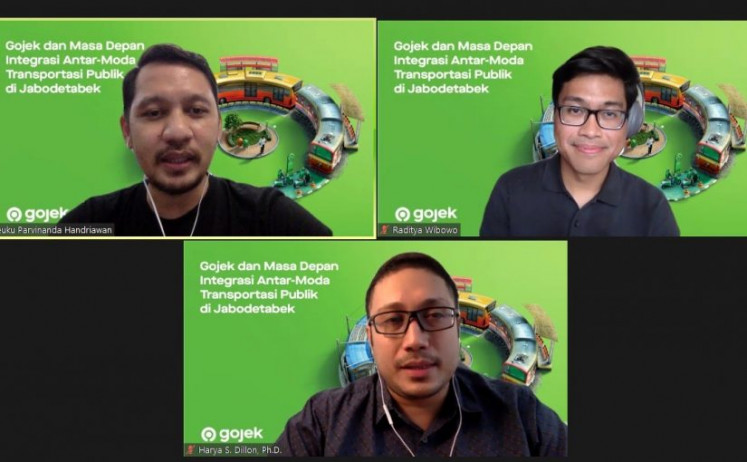
A recent study has found that Gojek’s on-demand transportation service is an integral part of the number of people taking public transportation in urban areas like Jakarta and its satellite cities: Depok, Bogor and Bekasi in West Java as well as Tangerang in Banten.
Gojek’s internal data show one in two Gojek users use the superapp’s transportation services to reach public transportation hubs, such as Transjakarta bus stops, KRL stations and MRT stations, while the number of trips has increased 46 percent per year.
Additionally, GoRide and GoCar’s 2019 trip history data also show a sevenfold increase in users of the two services using these services to access the MRT station in Lebak Bulus in South Jakarta from their homes and offices in December 2019 from the time that the station was officially opened.
The 11 main railway stations across Jakarta have become the most frequently ordered starting points and destinations by GoRide users in Greater Jakarta.
“This trend shows that GoRide and GoCar services have become an important part in complementing public transportation to meet the mobility needs of people living in urban areas like Greater Jakarta,” Gojek Group head of transport Raditya Wibowo said.
The role of on-demand online transportation in complementing the function of public transport is further supported by academic research.
Muhammad Zudhy Irawan, a lecturer at Gadjah Mada University’s (UGM) Engineering School as well as a researcher at the UGM Transportation and Logistics Study Center, shows in his February 2020 research that most users of public transportation typically use two ride-hailing applications at the same time.
However, according to Muhammad’s research, Gojek has two-and-a-half times as many loyal users as there are users of other ride-hailing apps. This is thanks to the high availability of Gojek’s drivers, the excellent service they give users, as well as the user-friendly application, along with its ample digital safety and security.
The reliability of both GoRide and GoCar has turned them into Indonesians’ first choice when it comes to connecting the first-mile-last-mile destinations for public transportation users in Jakarta and its satellite cities.
In fact, based on Gojek data, two-wheeled service GoRide and four-wheeled service GoCar help save as much as 40 percent of the total travel time by connecting to and from various public transportation points such as the MRT, commuter line and Transjakarta.
According to Raditya, to improve the integration of multimodal transportation, Gojek has also presented its latest GoTransit technology solution.
“The solution helps our users to plan and monitor trips to or from various public transportation hub points through integrated route recommendations and operational information. Later on, the GoTransit service will enable bookings and purchases of multimodal transportation tickets. We believe that more connected trips will encourage more people to travel using public transportation,” Raditya said.
Central Indonesian Transportation Society (MTI) secretary-general Harya S. Dillon also pointed to the importance of intermodal transportation integration.
“The presence of online transportation provides more value than was previously obtained from private transportation. This value must be maximized through intermodal integration as a first-mile-last-mile connecting segment,” Harya said.
According to Harya, the integration will allow public transport users to travel more smoothly, minimizing the amount of private vehicles on the road.
To support this mission amid the COVID-19 pandemic, Gojek has complemented its non-technological solutions with health and safety protocols.
“We already have 35 designated zones where drivers and customers can maintain their safety, health and hygiene while using Gojek across Greater Jakarta,” said Raditya. In Indonesian, these zones are called Jaga Kebersihan, Kesehatan dan Keamanan, better known by the acronym J3K Nyaman.
“Here, people take body temperature measurements for customers and partner drivers, manage queues while observing physical distancing, providing hand sanitizer and hair nets, as well as distributing face masks freely to users who run out of their supplies,” Raditya said.
He added that Gojek had become the first on-demand application providing this kind of health service to customers.
Citing various studies, including his which shows online motorcycle users account for 66.2 percent of all public transportation users, that have suggested a strong correlation between the number of people taking public transportation and the number of ride-hailing users, Harya emphasized that it was important for the two sides to strengthen their strategic collaboration to push the use of public transportation even further.
“Thanks to people’s trust in the use of online motorcycle taxis like Gojek as they are adapting to new habits, Gojek has the most active users compared to other transportation options, amounting to a 45 percent share, outnumbering other transportation options,” Harya said.